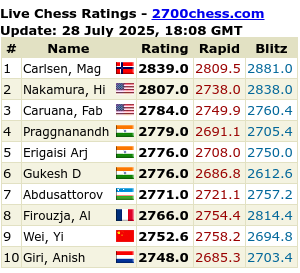The previous Grob Challenge Project was a success and I have been thinking about starting some new project and here it is: The Study Buddy Project
To call it a project is perhaps a little far fetched but I will give it a try.
In My limited experience, the strongest notion of really learning and improving has been playing slow Games and discussing/analyzng the games with My opponent. However, it is not easy to find opponents interested in playing slow games and to have a go at analyzing the game.
Enter the "Study Buddy Project"!
The Study Buddy Project is simply me acting as a match maker for chess improvers. Drop me a note if you are interested. Please indicate your rating, preferred rating of opponent, preferred sites and time zone considerations.
It would be really cool if you were willing share interesting annotated games and/or positions here at the blog. Short set of matches would be even cooler!
I would very much like to play a few slow games myself. My OTB rating is undefined but I tend to plateau at around 1500 playing turn basen games. At the moment I have accounts at FICS and chess.com.
German Uhlans, 1914
5 hours ago









